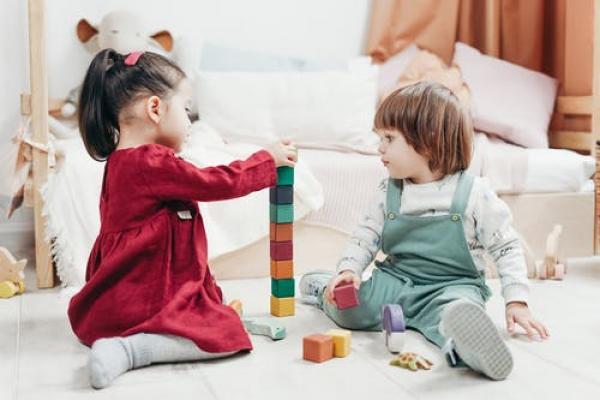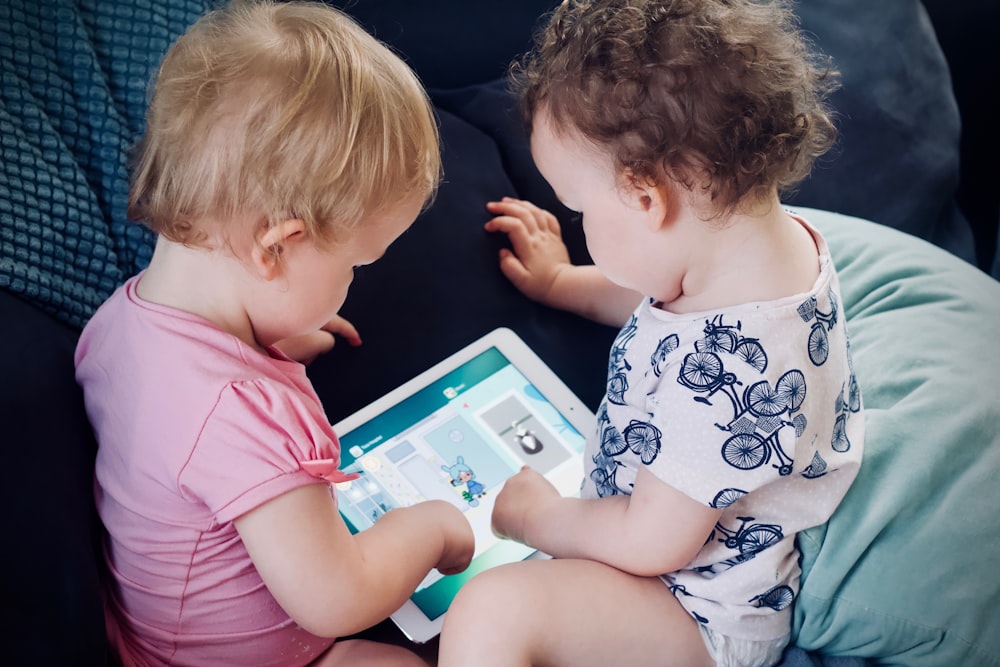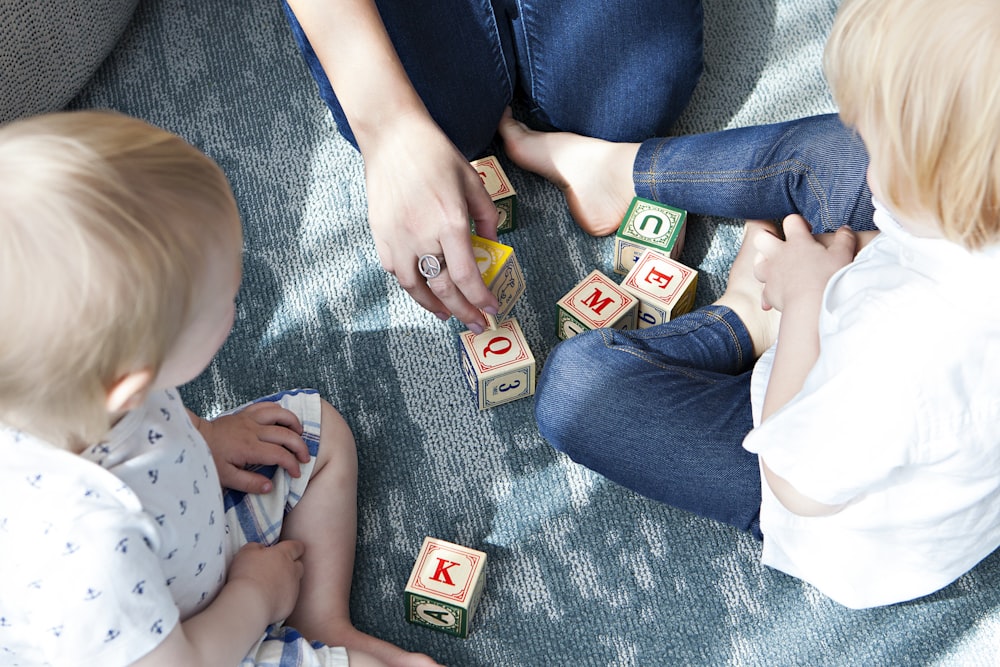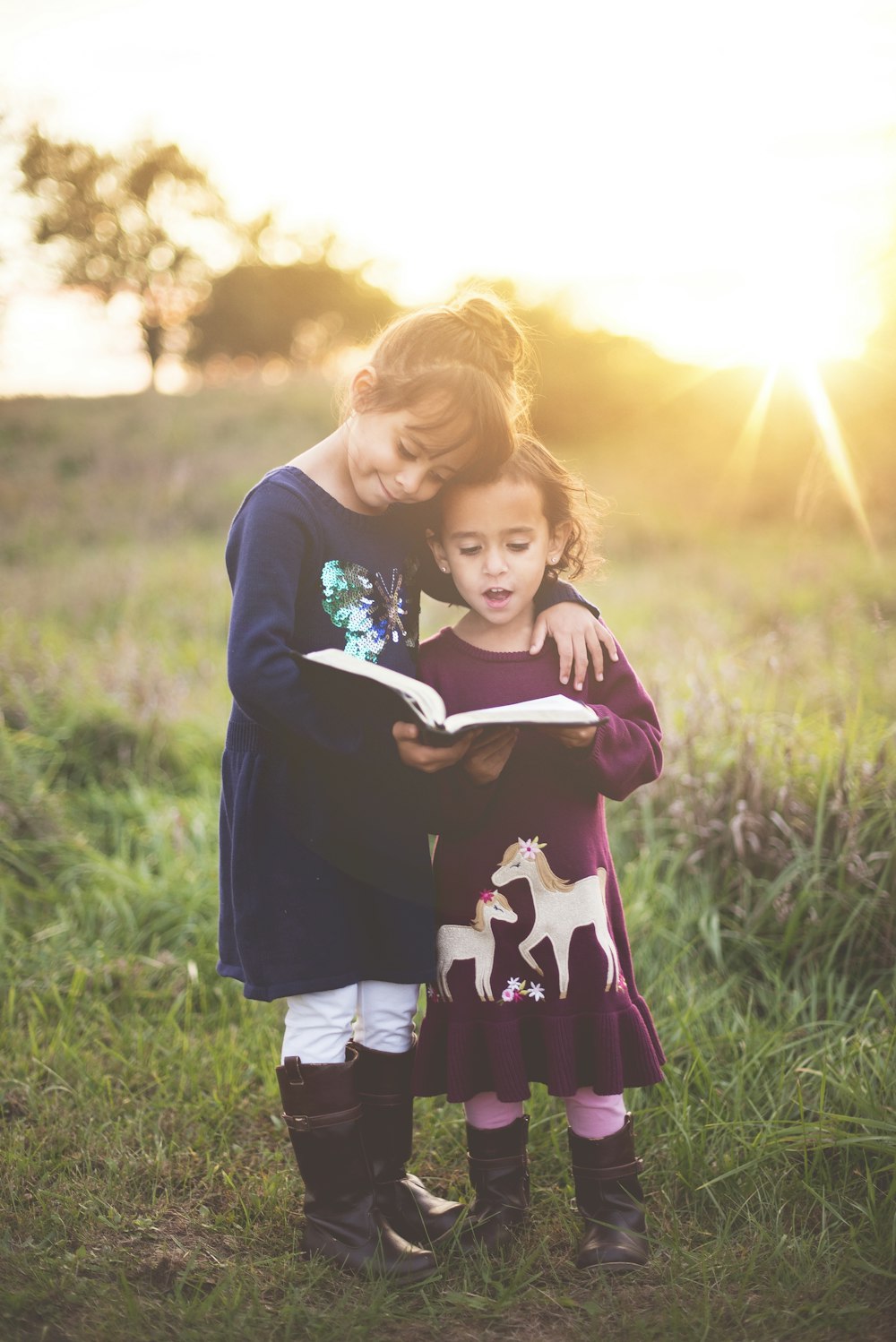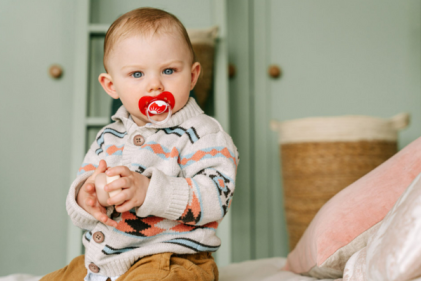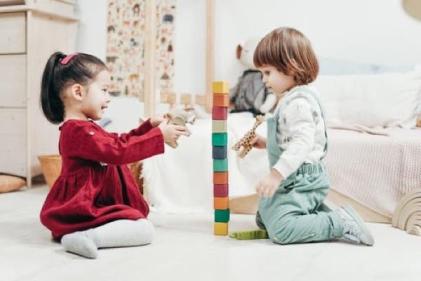Sharing provides emotional satisfaction. The act of caring, of making another’s life easier is generally something that is inherently pleasing to our human sense of morality. So, if this is such an inherent thing, why won’t my toddler share?
Sharing is an essential skill for toddlers to learn, and as they approach the age when it’s time to start thinking about going to playschool, it can be a little worrying to imagine them roaring ‘Mine!’ in the middle of free play. Sharing can teach children about cooperation, fairness, and kindness and also show them how to manage stress.
But learning to share is not as simple as learning to dress themselves or feed themselves. Learning to share involves self-sacrifice, social skills and empathy development. And if it’s taking your toddler a little while to get there, that’s okay. Toddlers are self-obsessed. Literally. At 18 months, they are just learning about their sense of self. They are at a stage in their development when the sense of ‘self’ and individualism first become registered, and they are really conscious of their wants and needs for the first time. But because this is such an early stage of development, they are obviously unaware that everyone experiences a sense of self too. This does not mean that your child is unsympathetic or uncaring – the are simply young and the concept of sharing is difficult.
A study by the University of Pittsburgh of how, when and why toddlers begin sharing found that children are actually more likely to engage in positive social behaviours like cooperating or helping others, before they are willing to share. The instinct to help is there, but sharing is different as it involves personal sacrifice. To make the connection that their sacrifice is a way to help another is a leap for toddlers to take.
The University of Pittsburgh’s experiment was conducted with ‘fifty-one 18- and 24-month-old children, who were administered 6 tasks with toys or food that could be shared with an adult playmate who had none.’
The children provided with an overabundance of toys, and an adult (playmate) partner would give the child social clues, from less to more explicit in their desire to play with one of the child’s toy. The communication on the adult’s part would culminate in a direct request for the child to share. This would all be overseen by a supervisor.
There were several factors at play in the child’s decision to share or not share their toys, but one of the most important to understand is ownership understanding. This is the invisible attribute of an object that means you have unique possession rights. When a toddler can understand the concept of giving up something that is inherently ‘theirs’, then they understand the concept of sharing and therefore understand the sacrifice they are making in giving it to another.
To emphasise the adult’s role as a playmate, the supervisor treated the adult like a child and the adult behaved similarly to the participant throughout the session, playing when the child did, looking at the supervisor when the child did, and so on. The adult waited for and followed directions from the supervisor and moved about the playroom only when requested to change locations by the supervisor and never instructed or helped the child.
The supervisor began each task by seating the child and the adult side-by-side at adjoining child-size tables, and distributing the toys equally to each one so that they both had 4-6 individual toys to play with.. Having a period of side-by-side toy play further reinforced the role of the adult as a playmate. It also served to emphasise the playmate's plight when the supervisor gathered up all the toys from both child and the adult and placed them all in front of the child, who now had 8-12 toys.
The adult was moved 90° perpendicular to the child so that she was out of reach of the toys and facing the child. The adult began a series of four progressively more explicit cues about her desire for some of the items. Each cue was repeated twice for a total of 5-7 seconds.
- First, using nonverbal cues, she audibly sighed several times, looked sad with downturned mouth and upturned eyebrows, and alternated gaze between the child's things and the empty space in front of her (Cue 1).
- Next, she verbalized her desire (e.g., "I don't have any shapes to play with. I need some shapes so I can play, too"). As she said this she made eye contact with the child and then alternated gaze between the child's things and the empty space in front of her (Cue 2).
- Next, she indicated her desire gesturally by reaching effortfully, but unsuccessfully towards the child's toys or food with palm down and outstretched fingers, saying, "I can't reach them," and alternating gaze between the child and the child's thing 3).
- Finally, she made an explicit request, turning her palm up and holding it out to the child while making eye contact and saying, "Could I have a [shape/cracker]?" (Cue 4).
- If the child did not share following Cue 4, the supervisor gave one of the child's things to the adult to demonstrate sharing (Cue 5).
- If the child shared at any point, the adult discontinued the cues, briefly thanked the child, and began to play with the toy(s) or eat the food that the child had given her
The child received a sharing score from 0-5 for each task, corresponding to the cue at which sharing occurred;
- 0 = did not share,
- 1 = shared after supervisor demonstrated
- 2 = shared after adult explicitly requested
- 3 = shared after adult reached
- 4 = shared after adult verbalized desire
- 5 = shared immediately upon adult nonverbal cues
Results found that 24-month-olds shared early in the series of cues, typically after the adult playmate verbalized her desire. Eighteen-month olds, in contrast, shared primarily after the play mate made an explicit request for a toy, following both her verbalizing desire and reaching towards the toys.
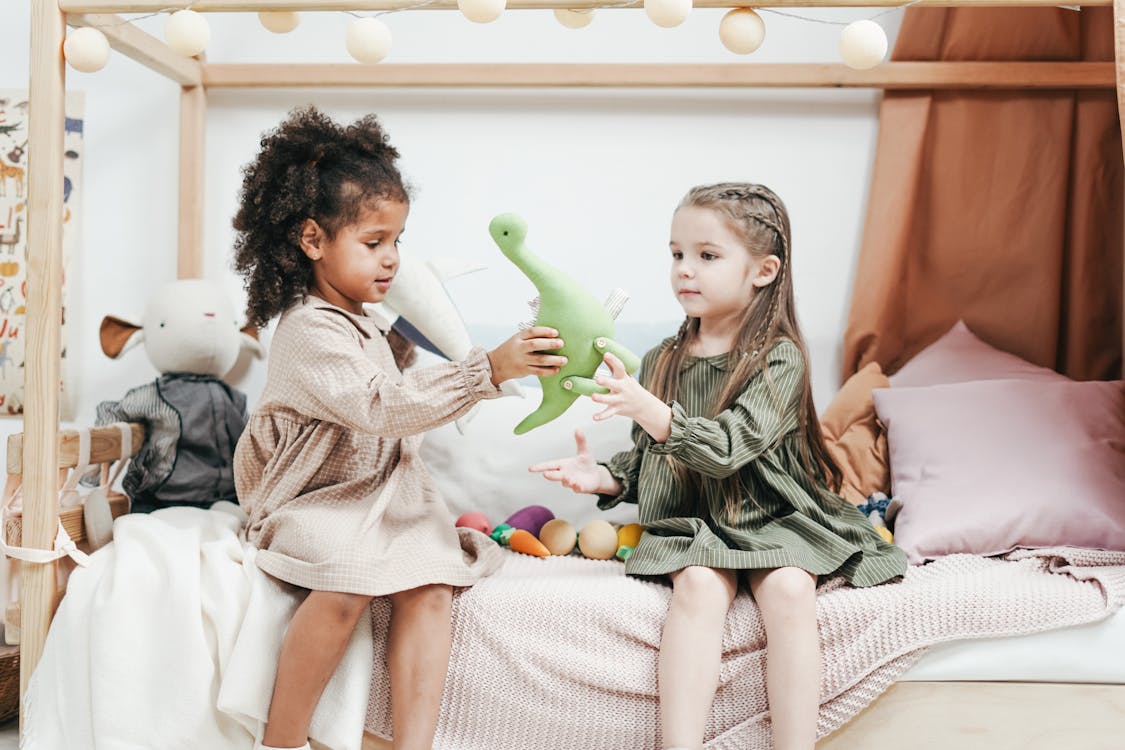
24-month-olds often shared immediately within the first 5 seconds, upon the playmate's sigh or forlorn look, doing so more than four times as often as 18-month-olds, who almost never shared immediately.
Essentially what this study found is that, in general, social understanding increases with age. The lack of sharing in toddlers ages 18 months was often down to incomprehension of the social situation. Alternatively, at 24 months, the toddler’s reacted quickly to the social cues, showing an increased understand of a sense of self in themselves and those around them,
However, that was obviously a controlled environment. Sharing isn’t as simple as all that when it comes to sharing with other toddlers. One of the earliest games adults play with toddlers is the praise for giving something to someone. ‘Tata!’ is regularly heard around toddlers and praise is heaped on them when an exchange occurs. Whereas in a more natural play environment, when it is two children, and sharing is not praised or set up in a reciprocal way, it is unsurprising that it is rarely initiated.
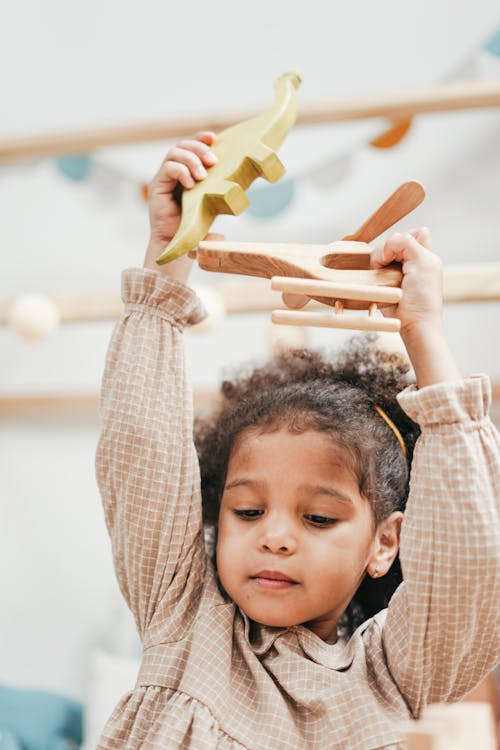
Toy Review Experts, a team of psychologists and professional researchers, have listed ways to encourage this ‘prosocial’ behaviour of sharing, through social, imitation and emotional situations;
Be a Good Role Model
The best way for your child to learn selflessness is to observe it. So lead by example and share things with your toddler. Offer him half of your apple, or your hat to wear, and ask if you can have his toy car. Use the word share to describe the activity and let your child see how you share with others. Respect their choices and ownership. Ask for your child’s permission before you borrow their toy, and make sure that other family members and playmates respect their possessions too.

Play a ‘Taking Turns Game’
Play a ‘taking turns game’ while you’re reading books or playing together. For example, you hug her favourite doll, then give it to your toddler to hug. You brush her hair, then allow her to brush yours. You stack a cup, then she stacks another, and so on. Your child will begin to understand that taking turns can be fun and that sharing things doesn’t mean that she’ll never get things back.
Praise Your Child’s Sharing Efforts
Cheer when your toddled shows his toys or allows others to touch or hold them, even if he doesn’t let go of the object. Praising your toddler’s attempts of sharing will encourage this behaviour.
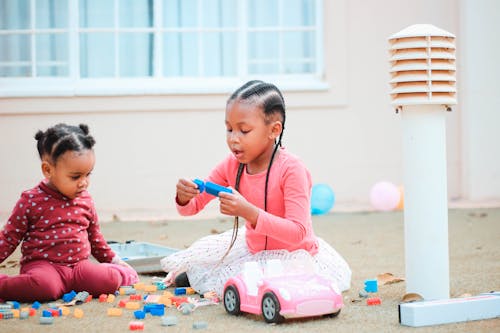
Help Your Child Explore Feelings
Talking about feelings is the best way to help your toddler understand the feelings that relate to sharing. For example, asking “Are you worried that Sam won’t give you the ball back?” or “Mia is sad because you won’t give her a doll” helps your child explore the emotions and put their own feelings into words.
Don’t Punish Them for Not Sharing
If you discipline your 18-month old whenever he doesn’t share, you’ll encourage anger and defensive behaviour instead of generosity and altruism. Punishing a toddler for not sharing probably won’t help her learn to share, so use every opportunity to encourage taking turns instead. Practice and encouragement will help your child learn how to communicate her needs and understand the importance of sharing.
Use Distraction
When things get too heated up, simply offer another toy or game and redirect your toddler’s attention.
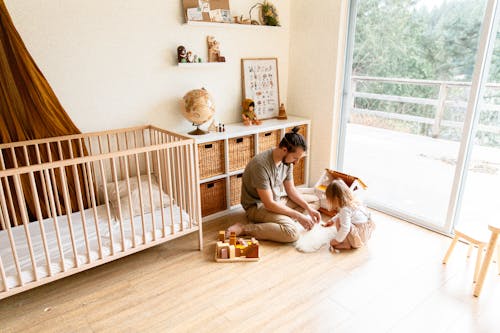
Talk about Sharing
Talk to your child about sharing before you set up play dates or take him to the park. For example, you could say, “When we go to the park, you’ll need to share some of your toys. You can take turns the same way you and I do when we play. Why don’t we bring all your beach toys so you and your friends can play together in the sandbox? “Also, before the play begins, help your toddler choose which toys he will share with playmates and which ones he wants to keep to himself.
This is a process that will take time and requires patience, from both you and your child. Allow them the space to make mistakes and create learning experiences and know that with time, social interaction and good example, your toddler will be just fine.
(Brownell, Celia A., et al. “Mine or Yours? Development of Sharing in Toddlers in Relation to Ownership Understanding.” Child Development, vol. 84, no. 3, 2013, pp. 906–920., www.jstor.org/stable/23469319.)

